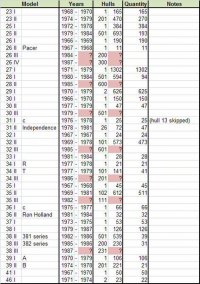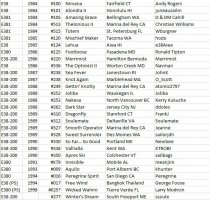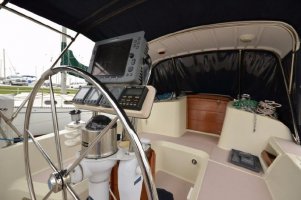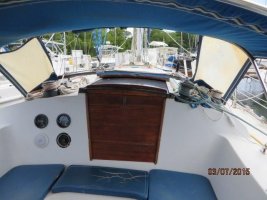Interior Options = Exterior Consequences
Christian, your two pictures are very helpful.
In any boat in that size range, when you design in an aft cabin on one side and a head compartment on the other, there is a need to push the boundary forward inside. This puts some standup headroom in both of these cabins. To do that you need to move the entry into the interior of the main social/galley/dining area of the boat... forward. This arrangement uses the interior space forward of the mast where the old "type a" interiors always have a head compartment.
So then the central part of the interior is ended right where the forward sleeping area commences, i.e. the forepeak berth.
This was done in the E-32-200, the 80's E-34, the Olson 34, and the E-38-200.
One minor note: the engine-forward-under-galley version of the 38-200 does have the companionway aft like the earlier model, and I can only guess that the engine location forced that; and to enlarge both of the "aft areas" they moved the engine back and then pushed the entry way forward. (Otherwise you cabin interior steps would have been against the larger galley module.)
While we really like our interior layout - enough that it was a feature that attracted us to buy the boat - there are always trade offs.
For instance, we almost bought an E-32-200, and it's good that we did not. The aft head and aft cabin was really too small for us. Another buyer would likely be happy with it, however. "Enough" room in any given part of the interior is subjective.
If you were to make little paper cutouts of the interior living areas, you would be moving them around in a sort of "zero sum" design exercise. (Strictly IMHO).
For a comparison of what is gained/lost, I refer to our friend's E-33RH, with a head forward - their main cabin is more spacious than ours, for instance.
So, back to the pix above. The aft cabin/head layout pushed the entry forward and causes you to "shuffle" under the dodger through an alleyway to get to the entry to the interior. In a "type a" interior, you can more easily step over the bridge deck on down onto the interior steps.
It's a classic situation of "Everything's a compromise". :rolleyes_d:
*Aside: once we got to spend an hour aboard a Santa Cruze 52C at a boat show......
very few compromises! And for $750000. I would not expect many either.

Loren




